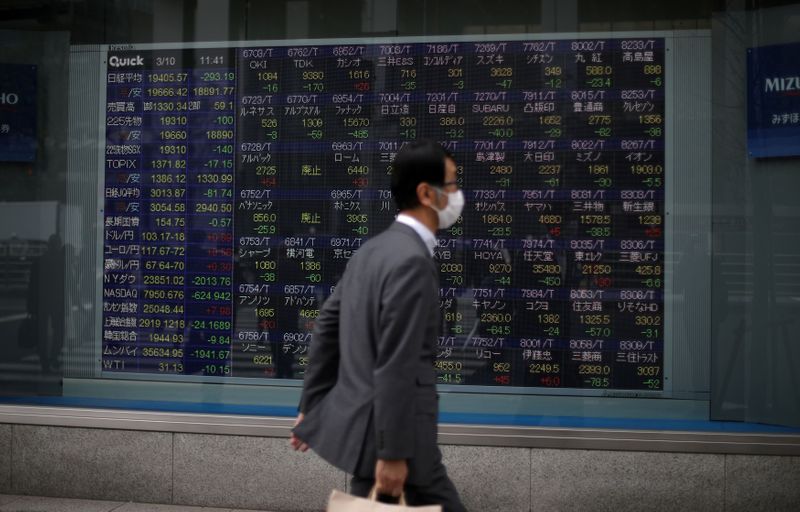By Chuck Mikolajczak
NEW YORK (Reuters) - A gauge of global stocks kicked off September on a higher note on Tuesday, as data in major economies showed manufacturing demand rebounding from coronavirus-induced lows, while the U.S. dollar remained weak.
In the United States, stocks added to gains after two measures of manufacturing activity indicated expansion, with the reading from the Institute for Supply Management (ISM) hitting a 19-month high.
Factory activity in China expanded at the fastest rate in nearly a decade in August, a private PMI survey showed on Tuesday, boosting market sentiment overnight and at the European market open.
Euro zone manufacturing activity also grew last month to stay on a path towards recovery, though factory managers remained wary about investing and hiring more workers.
"These are great headlines and certainly bolstering confidence in a U.S. and European rebound," said Jack Ablin, chief investment officer at Cresset Capital Management in Chicago.
"I would call this great rebound news, but as long as we are relying on government support, both here and abroad, we have a long way to go."
The Dow Jones Industrial Average (DJI) rose 50.45 points, or 0.18%, to 28,480.5, the S&P 500 (SPX) gained 10.25 points, or 0.29%, to 3,510.56 and the Nasdaq Composite (IXIC) added 105.92 points, or 0.9%, to 11,881.38.
The gains pushed the S&P 500 and Nasdaq to intraday records.
The rebound in manufacturing can be partly attributed to massive monetary and fiscal stimulus programs implemented across the globe to support economies battered by the coronavirus.
But not all data was rosy and European stocks reversed course and turned lower after Germany cut its GDP forecast for 2021 and a reading on inflation for the bloc turned negative for the first time in more than four years.
The pan-European STOXX 600 index (STOXX) lost 0.34% and MSCI's gauge of stocks across the globe (MIWD00000PUS) gained 0.32%.
The dollar remained weak against a basket of major currencies despite the optimistic data, falling to its lowest level since late April 2018 at 91.737. The greenback has dropped about 1% since Federal Reserve Chair Jerome Powell on Thursday said the U.S. central bank was shifting to average inflation targeting.
Graphic: Dollar's dive in 2020 Dollar's dive in 2020 - https://graphics.reuters.com/GLOBAL-PRECIOUS/ygdvzmnlgpw/chart.png
The dollar index (=USD) fell 0.154%, with the euro (EUR=) up 0.18% to $1.1957.
The euro climbed above $1.20 for the first time since May 2018.
Benchmark 10-year notes (US10YT=RR) last fell 4/32 in price to yield 0.7064%, from 0.693% late on Monday.
The weaker dollar helped lift oil prices, reversing overnight losses.
U.S. crude (CLc1) rose 1.57% to $43.28 per barrel and Brent (LCOc1) was at $46.08, up 1.77% on the day.
Graphic: 2020 Global asset performance - https://fingfx.thomsonreuters.com/gfx/mkt/qzjpqwbqkpx/Pasted%20image%201597236564783.png

